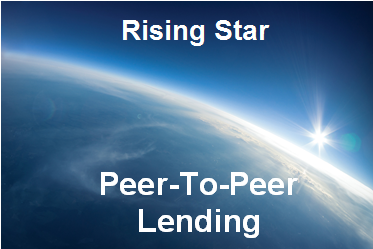Peer to Peer Lending as an Investment (P2P Lending vs. Stocks Review)
These days, stock market investing or 401K contributions are the most popular types of investments for new, intermediate or experienced investors.
However, a new industry known as peer to peer lending is starting to emerge as a viable option with great returns.
Today we're going to take a look at each of these options in further detail to determine how peer-to-peer lending stacks up against stocks for the average investor.
Understanding Stocks, Bonds, and Standard Investing
This should be familiar terrain to everyone. A company decides to go public and sends out an I.P.O., or initial public offering. Investors buy shares of the company. As the company grows, the value of the investment grows.
Don’t Miss: 5 Best Super Funds in Australia | 2014 Top Superannuation Fund Reviews
Also, dividends can be earned with many forms of standard investing. When businesses fail, however, investors lose money.
For a quick read on stock investing, check out the below articles:
[related1][/related1]
Understanding Peer to Peer Lending
A newer, yet pretty impressive option on the market these days is peer to peer lending.
If you've ever given a friend or family member a loan, you've engaged in peer to peer lending.
However, today there are platforms that allow you to loan money to other consumers, with interest attached and at a mass level. This turns peer to peer lending into a viable investment strategy for average individual investors.
Don’t Miss: 6 Ways to Protect Your Wealth and Financial Assets
Comparison of Standard Investing vs. P2P Lending
So, let's take a look at these two key types of investments, and see what the pros and cons are.
|
|
Standard Investing |
Peer to Peer Lending |
|
Pros: |
|
|
|
Cons: |
|
|
[related2][/related2]
The Verdict?
Most people would say that both options should be used for a healthy, diversified investing portfolio.
However, I strongly believe that it is best to allocate about 70% or more of your investments in standard forms (stocks, etc.) of investment as a security net.
Why? Because…
- Standard Investments are Regulated – This plays a huge role. It just doesn't make sense to put the majority of your investing dollars into an unregulated industry.
- Giving Credit Where Credit Is Due – Although the peer to peer lending industry is an unregulated one, more and more people are realizing real returns using this option every day. With so many great stories about this option, it's hard not to give it a try. Which is why I think it would be best to use the option as a minor diversification to your profile.
[related1][/related1]
Tips for P2P Investing
It’s very important to diversify and take defaults into account when investing, as there is nothing you can do if your “peer borrower” decides not to pay.
Also, keep in mind that there is no systematic regulation of the peer to peer lending industry. While new online platforms make it easy to diversify into P2P lending, we all know what Wild Wild West lending practices can do to a market.
However, with its growth as an investment option, I see regulation for the industry on the horizon.
Don’t Miss: 8 Best Credit Unions Open to Anyone | Credit Union vs. Bank. 2014 Top Review
Before making any sort of investment decision, make sure you understand that decision entirely. You should always do extensive research on any investing option first to make sure that you completely understand how it works.
If you don't feel completely knowledgeable about the investment, you may want to seek the assistance of a financial planner or look at other options.
[related2][/related2]
Article by Joshua | Edited by MarketConsensus Editor: Ogbe Airiodion






